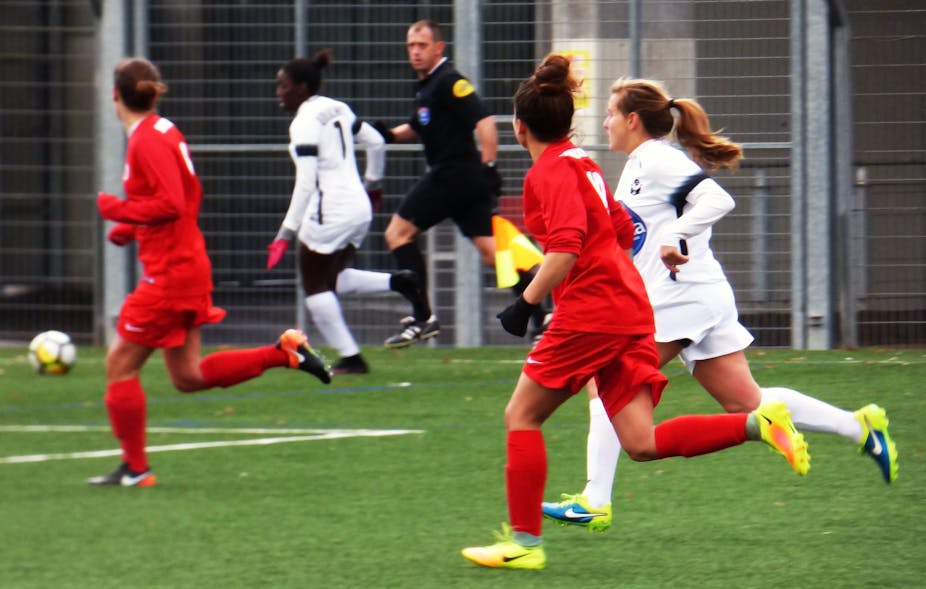How would football fans react if Cristiano Ronaldo or Lionel Messi refused to play for their respective home countries in the World Cup? Both players have been honoured several times with the Ballon d'Or, and count among the top players of all times. At this year’s Women’s World Football Cup in France (June 7–July 7) – the eighth and largest edition, with 24 countries in competition – Norway’s Ada Hegerberg, winner of the first female Ballon d'Or in 2018, was missing. Hegerberg resigned from her national team in 2017, accusing the Norwegian football association of sexism and discrimination.
Hegerberg argues that female players do not receive the same respect from the Norwegian Football Federation as their male counterparts. While the women’s team has always achieved better results than the men’s team, the female league receives 10% of what the men’s league does. The lack of investment is reflected in the meagre budget for communication and marketing, which in turn leads to low attendance at women’s games.
What do the stories behind the women on the field, and the women and men off field, reveal about the state of sexism today in football leagues? How has gender diversity in the sport gained ground?
Sexism, discrimination and gender inequality vs. gender diversity
Sexism is defined as “behaviour, conditions, or attitudes that foster stereotypes of social roles based on sex”, and is manifested through prejudice or discrimination. While men are often perpetrators of sexism in football, both men and women can hold sexist beliefs. Perpetrators of various forms of sexism during the Women’s World Cup include players, coaches, commentators and journalists. In addition, football federations and leagues, through their administrators, processes and regulations, can sustain or challenge sexism.
Institutionalised sexism is evident when gender inequality in sport becomes a norm so entrenched that it is hardly recognised and even more rarely questioned. Sociologist Marie-Cécile Navès notes the interiorisation of inferiority when the lodgings of the French women’s team were shifted shortly before their World Cup so that the men’s team could use the best facilities. French coach Corinne Diacre attempted to alleviate the debate by remarking that it has always been like that, which sparked sharp criticism from the national press for discriminatory practices.
Women in decision-making roles in the world of football seem to prefer the positive term gender diversity rather than sexism. In a June 2019 interview with the BBC, Brigitte Henriques, vice-president of the French Football Federation (FFF), stated:
“We don’t talk about fighting sexism and gender discrimination or prejudices. Having an anti-sexist policy is often less effective than saying you have a pro-gender diversity policy.”
Role of media in shaping the public’s perception of the sport
Media presents sports not only in the competitions themselves, but also in pre- and post-game programs, and thus plays a key role in how they’re perceived by the public. Consider the following:
In most countries, the Women’s and Men’s World Cups are televised differently. In Germany, all men’s games are televised live at different times of the day including prime time, which is between 8 and 11 pm. Women’s games, especially in the preliminary rounds, are not televised at prime time, nor re-scheduled to air before 8 pm.
While retired female players are hired as experts to analyse women’s matches, when an all-women commentator team was hired by the BBC, accusations of sexism (against men) arose from both men and women.
While the number of women journalists for the Women’s World Cup coverage and football in general has increased, female commentators are rarely used as play-by-play announcers for men’s games. Men commentators commonly play this role for women’s games.
Benevolent sexism, which is difficult to detect, occurs when journalists characterise the same behaviour from male and female athletes in different ways. For example, women players could be described as shy or cautious, while the same behaviour for men might be associated with time- and energy-saving tactics. Common stereotypes are unconsciously revived, and shared with millions of viewers.
The sports press gives only token attention to women’s football results. A 2017 French study showed that women’s football accounts for only 2.1% of sports press pages.
Visible improvements on the field, but minimalist female representation on top boards
When it comes to the organisation of football, the place of girls and women has improved in certain areas:
Since 2012, France has gone from 53,000 to almost 180,000 registered female players; from 25,000 to 35,000 female managers; from 600 to 800 female referees; and from 1,000 to 3,000 female educators.
The number of female coaches in the World Cup has significantly increased from only one in 1991 (out of 12 teams, or 8%) to nine in 2019 (out of 24 teams, 38%).
At the first Women’s World Cup in 1991, only 6 out of 20 referees were female. In 2019, all 75 referees were women.
However, on the governance level there is room for progress. To this day the FIFA Council counts 6 female members out of 37 total, the minimum required by this international organisation’s constitution.
Future paths toward gender equality
Gender diversity is far from winning the match against sexism. The sports press has a great responsibility in promoting women’s football and accompanying a change in mentality. Increasing numbers of female spectators and fans will also help women’s football gain greater media coverage and attract more sponsors.
However, funding gaps continue to characterise the sport. While the US women’s national soccer team has won four World Cups, and reached all-time highs for TV audiences, the US men’s team did not even qualify for the World Cup. Nevertheless, the men’s team still receives significantly greater funding than the women’s team.
Just three months before this year’s World Cup in France, the US women’s soccer team took the US Soccer Federation to court for discriminating practices. As women football players make legal issues out of funding gaps, they also make a case for gender inequality. Clearly, fair play starts with fair pay.


